Google Adsense—>

Best Dog Food For Puppies: What Is The Best Dog Food
Dog Nutrition and Holistic Pet Care and Food
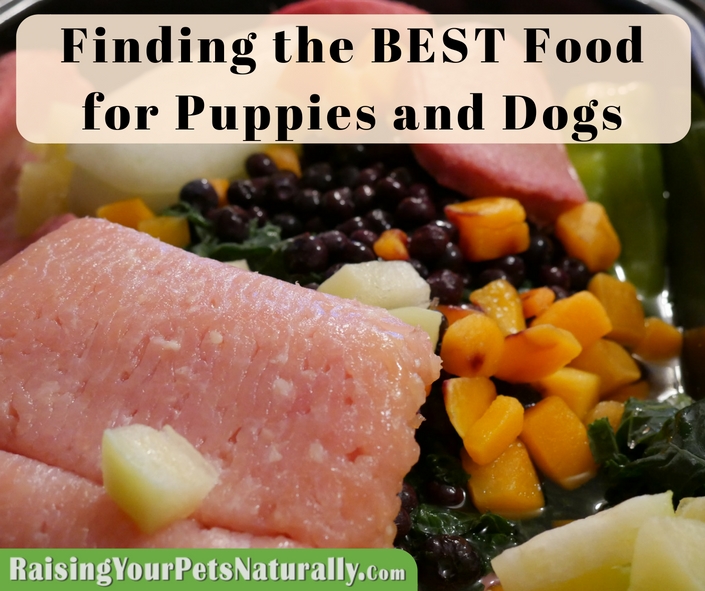
(Excerpt from Proactive Puppy Care: Preventing Puppy Problems)
Healthy Dog Food and Proper Weight I am sure you have heard the old saying, “You are what you eat.” I have no doubt that this holds true for both humans and our canine friends. Choosing the correct dog food for your puppy can be very confusing, and if you ask five friends and five vets what a healthy dog food contains, you will likely get ten different answers. So let us look at the six main categories of dog food, or dog’s diet: dry, freeze-dried, roll, canned, raw and home cooked. Then we will discuss how to read a dog food label, and what kinds of ingredients your puppy needs to thrive.
Dry dog food is by far the most popular category in the pet food industry. There is no doubt that dry food is very convenient and can range in price from cheap to quite expensive. Dry dog foods tend to be high in carbohydrates, which then turn into sugars when digested. Another down side in a dry dog food is that the high temperatures used in the manufacturing process make the food less digestible and nutritious for your dog. This processing takes out almost all the moisture in the food. Moisture in your dog’s diet is important to prevent dehydration, kidney disease, organ function, and proper digestion. Adding water to the dry food will not provide your dog with adequate moisture. Dry dog food does not typically help with dental care since a dog tends to gobble up his food instead of chewing. Moisture in your dog’s diet is important to prevent dehydration, kidney disease, organ function, and proper digestion. Adding water to the dry food will not provide your dog with adequate moisture. Dry dog food does not typically help with dental care since a dog tends to gobble up his food instead of chewing.
Dehydrated or freeze-dried dog food is another dog food category that is pretty convenient to give. The manufacturing process uses lower heat than dry, which helps maintain the nutritional value of the dog food. However, once again the moisture is taken out of the product, so if you are using this product make sure you add enough water to fully re-hydrate.
Dog food rolls can either come in a refrigerated variety or one that can stay at room temperature prior to opening. Dog food rolls are less processed and at lower temperatures, which helps preserve the nutritional value. Rolls are also higher in moisture content than dry or dehydrated.
Canned dog food tends to use a lower temperature and is less processed than dry dog food. Again, the lower temperature processing keeps more of its nutritional value. Canned food is also high in moisture.
Raw dog food can come in a prepackaged patty, frozen, or made at home. A prepackaged raw diet is nutritionally balanced with little or no preservatives. Since the diet is raw, it has not been processed and keeps all of the nutrition and moisture of the food unless it is a dehydrated raw. If you provide your own fresh raw diet, you are able to customize the ingredients to meet your dog’s needs. You will however need to ensure that the diet is balanced and add vitamins and minerals.
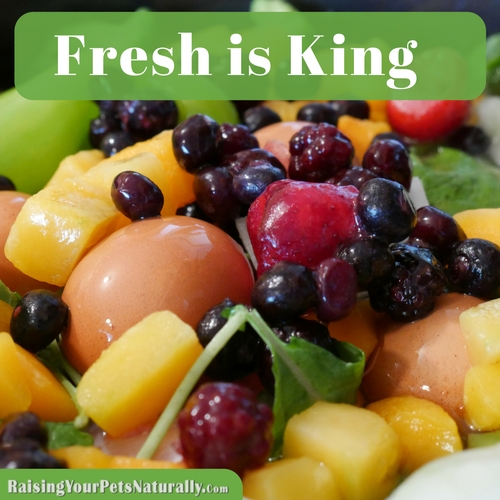
Home cooked dog food is truly a customized diet for your dog’s specific needs. This diet will be high in moisture, and nutritional value, will not be processed, and will not contain any preservatives. If you choose organic ingredients, you can also ensure that the food is pesticide and chemical free. This diet will also need to be balanced and have added vitamins and minerals.
Reading a dog food label can be confusing and time-consuming, but is truly imperative if you want to provide a high-quality, nutritionally rich dog food. Minimally the first 3-5 ingredients listed should be a named meat sources such as salmon, turkey, chicken, or lamb. The more muscle meat, the better. “Meat,” “animal,” or “fish” is not a named meat. Meals such as chicken meal are highly processed and may or may not contain skin and bones. Grains such as oats, quinoa (actually a fruit), and brown rice are not bad as some marketers may lead you to believe. However, ideally, they will not make up the majority of your ingredients. Fruits and vegetables should make up the other portion of your dog’s food. Read is your pet eating other pets?
My personal top 11 ingredients that should NOT be in dog food or treats:
- Flavors of any kind, natural or artificial-No artificial or natural “flavors” of any kind. If it says, “flavor” in the ingredient list, back on the shelf it goes. It is not real food. And if it is not a real food ingredient, it does not have a place in my dog’s treat or dog food.
- Sugar of any kind including high corn fructose, corn syrup or cane sugar-Added sugar or high corn fructose is just adding empty calories. Not only are these ingredients bad for your puppy’s health, they will also hop him up, and your puppy can become hyperactive.
- Sorbitol-A sugar commonly found in berries, but it is prepared synthetically, so it is now a synthetic ingredient.
- By-products or digest-I can not think of one reason that a by-product or digest would be in a dog treat or dog food. If you are looking to provide healthy food and products for your puppy, something that is left on the floor of some meat manufacturing plant should not make the cut. And these products can even be carcasses from veterinarian practices! That is a pretty scary thought.
- Coloring, artificial or natural-Why would a pet treat manufacturer put dye or coloring in a dog’s treat? To please the consumer’s eyes, of course. This is not necessary in a food item, especially when the coloring is artificial. Artificial anything is a chemical process and has a long list of possible side effects. “Natural food coloring” is not any better. If the ingredient list does not list specifically what the coloring agent is, then natural can be made by things like bugs and rocks.
- Animal fat or anything “animal” or “meat”-Can you picture the animal when you read “animal” or “meat”? I would venture to say no. If the listing is that vague, it means that anything can be in the bag. A meat should list what kind of meat such as chicken, beef, or lamb.
- Chemical Preservatives-Chemical preservatives of any kind should be avoided. Healthy does not equate to chemicals. No BHT (Butylated Hydroxytoluene), BHA (Butylated Hydroxyanisole), Ethoxyquin, TBHQ (tertiary butylhydroquinone), Propyl Gallate, Propylene Glycol or Sodium Nitrite should be in your puppy’s treats or food. BHA, BHT and Ethoxyquin are banned in human foods.
- Corn, wheat, or soy-A lot of dogs are allergic, or have a low tolerance to these ingredients. Excessive soy may contain estrogen that might provide some estrogen-like activity in your dog and contribute to slightly lower thyroid hormone levels.14 Why risk it?
- Glycerin, vegetable glycerin or glycerol-Glycerin or glycerol can actually be produced as a by-product of diesel fuel. It will be unlikely you will know the difference from reading the ingredient list (although vegetable glycerin is plant based, not from fuel). This is an ingredient in dog treats that helps make a treat soft and sugary. It is not uncommon for dogs to get a big case of diarrhea from eating treats or food with this ingredient.
- Binders such as agar agar, cassie gum (gum Arabic), guar gum, tapioca, gluten, xanthan gum, and carrageenan can block your dog’s intestines and even their esophagus while eating. These binders often cause gas and diarrhea. High doses have also been linked to gastrointestinal inflammation and colon cancer.
- Added salt, regular or sea salt-Every living creature needs sodium in their diet, but too much can cause problems such as seizures, diarrhea, and extra water intake. A lot of foods have naturally-occurring sodium, so you do not need extra salt added to treats or dog food. However, salt is a natural preservative, so this alone would not rule out a dog food or treat for me if I could not find a better selection and this is the only not-so-favorable ingredient.

My philosophy is that a dog needs a high-meat diet with fresh, whole foods and a lot of moisture. I typically shoot for about 75% (now I shoot for 90%) of meat. I personally home cook (now DIY raw) for my dog Dexter, using as many organic ingredients as possible. Home cooking for your puppy does not have to be complicated, but you do need to ensure that you are providing a balanced diet over time and supplementing with the appropriate vitamins and minerals. For more information on how to start a home-cooked diet for your puppy, you can purchase my book What’s For Dinner, Dexter? Cooking For Your Dog Using Chinese Medicine Theory.
You will need to consult with a veterinary food therapist to learn how to balance the phosphorus and calcium for a puppy.
Read more on reading a pet food label and choosing food that is right for you and your pet.
(Excerpt from Proactive Puppy Care: Preventing Puppy Problems)
Your questions or comments are welcome below.
Are you looking for even more ways to stay up to date with Raising Your Pets Naturally? Sign up for the newsletter for more tips and promotions. Don’t forget to be social and Like, Follow and Subscribe. Comments below are always welcome.
Facebook Twitter Pinterest Instagram YouTube
 |
|
|
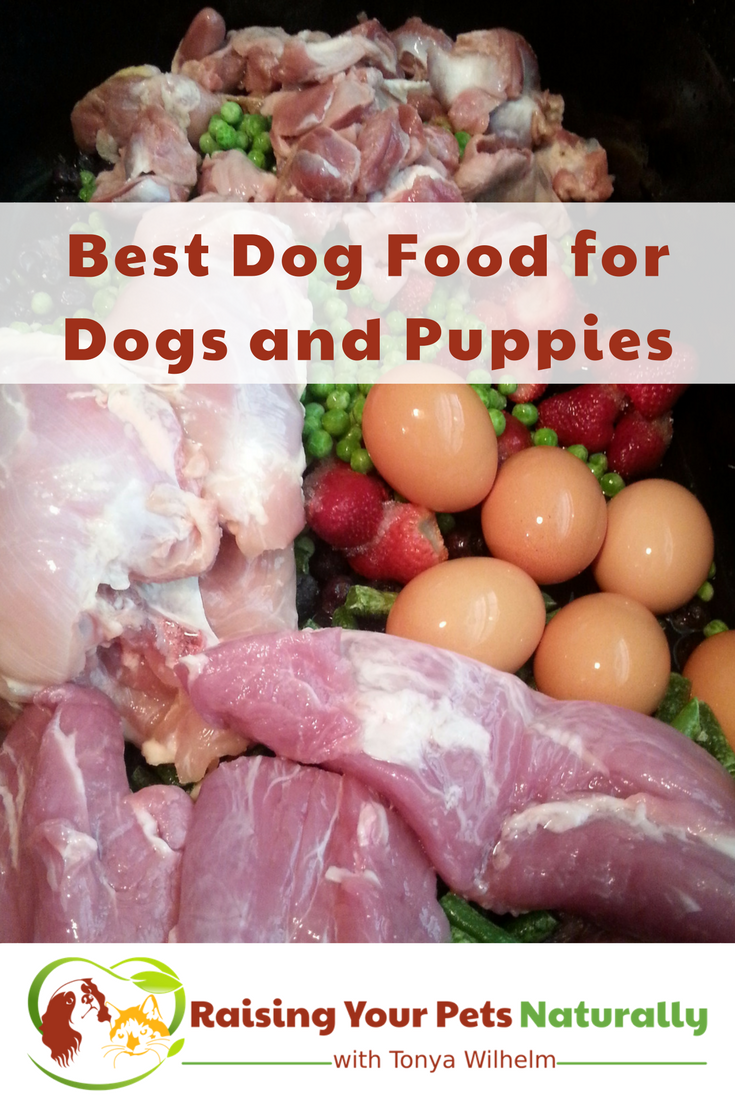
Google Adsense—>

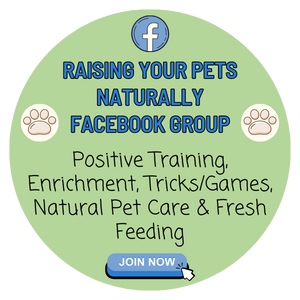





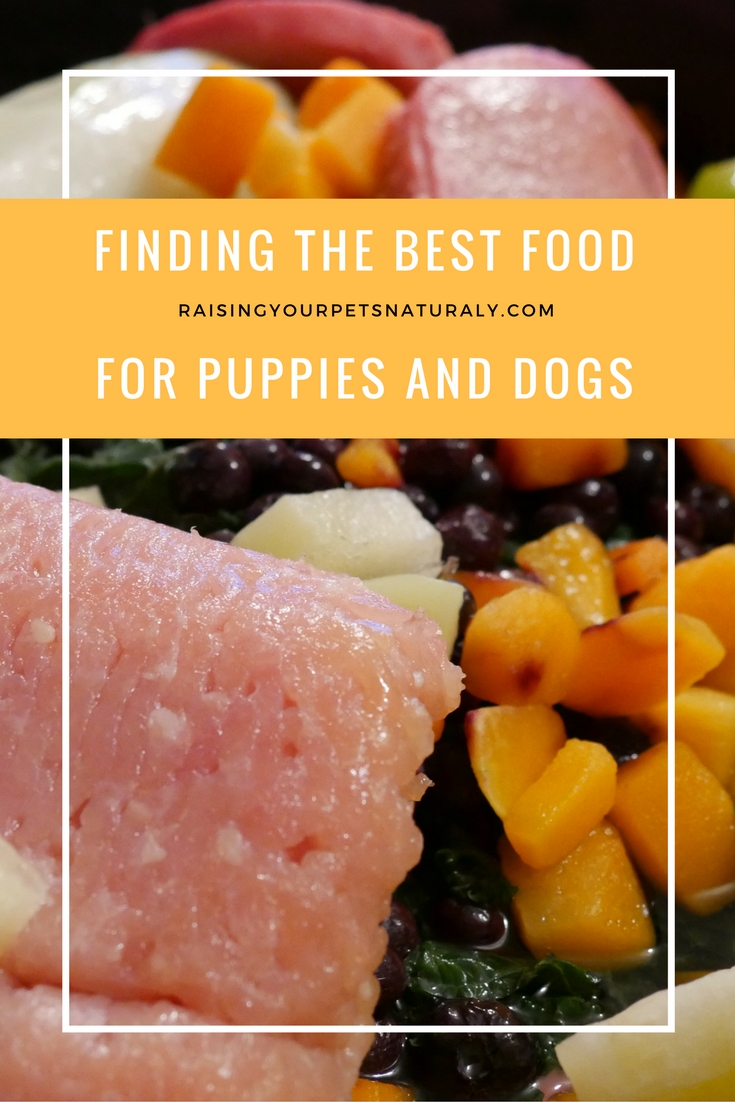
Such a thorough collection of advice on foods for your pet. Alas, no dog any longer. Lost her after many years. Someday we may try another.
Thanks, Kim. I’m so sorry for your loss. <3
I add some raw meat to my dogs their dry food. Because all raw would be crazy expensive with 4 large dogs! But it’s so important to read the labels and find the perfect food for your best friends! Great research!!
Happy Holidays!
That’s awesome! Any additional fresh foods to a pet’s diet always has benefits. 🙂
A comperehensive post about good healthy food! We love fresh foods!
Thanks, Dash Kitten Crew. Fresh is always best. 🙂
“…something that is left on the floor of some meat manufacturing plant should not make the cut.” I agree! But that’s NOT what digest and byproducts are. 🙂 The definition actually precludes that. Organ meats like heart, kidneys, liver and other portions of an animal is a byproduct, for example, because PEOPLE won’t eat it. “Digest” is the liquified protein (predigested) that’s sprayed on food for flavoring. Sure, fresh food is better but it’s really important to sift through the actual definitions of the terms. I know that many folks hate the idea of feeding anything but lean meat to pets and that’s fine–but just because humans don’t eat these parts of the animal doesn’t mean it’s not nutritious. *shrug* So glad that you’re sharing important information about feeding–it’s vital to be critical!
It’s because if it says “animal digest” or by-product, it’s not named. It’s not saying something like chicken kidney, in which case I’d be all for it. We use organs as part of our meat portion of our food.
Great article and I love your comment “fresh is king” – we couldn’t agree more!
Thanks!
Great advice for what to look for and avoid in your dogs food. There are so many brands out there to try and it can be hard to find a good quality product that your pet also enjoys.
I agree with your philosophy, homecooked and the most natural or “real” is best.
Thanks! And the good thing is that there are more good pet foods coming to the market. 🙂
Oh my gosh, I so appreciate this list of what NOT to feed or to watch out for in commercial foods. I’m going to save this AND share it. Thanks!
Thanks, Pip! Finding a healthy pet food is so important. I appreciate you stopping by.
We’re seeing more and more grain-free cat food.
Good! Grains really shouldn’t be in a cat food since they are obligate carnivores.
I have cooked for Mr. N in the past when he was sick but currently he’s eating pre-made raw. We did prey model for a while but we have limited freezer space.
Raw or cooking are great options! Yes, I bought Dexter his own freezer chest. And it’s in my bedroom. HAHAHA
What a thorough and helpful explanation of the variety of options and the positive aspects of each for folks to consider. This is a great resource for pet owners. Thank you for sharing.
Thanks. I appreciate that.
Thank you for this informative post with so many options it can get confusing and some are not even aware of the choices they can make when it comes to chosing the kind of food one wants to feed their pup
Very true. It’s important that we fuel our pet’s bodies (and ours) with fresh, real food.